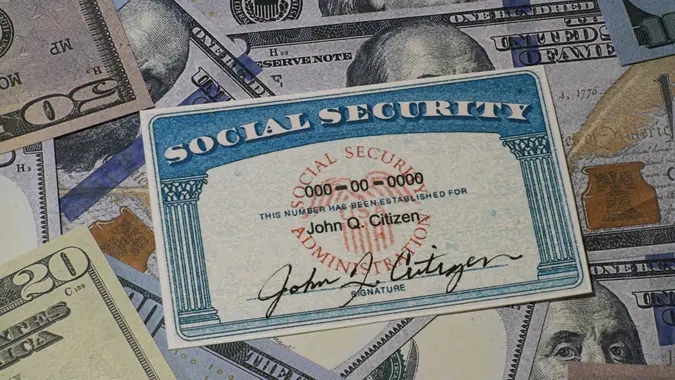The 3 Best Ways for Boomers To Use Personal Loans To Stretch Their Retirement

Commitment to Our Readers
GOBankingRates' editorial team is committed to bringing you unbiased reviews and information. We use data-driven methodologies to evaluate financial products and services - our reviews and ratings are not influenced by advertisers. You can read more about our editorial guidelines and our products and services review methodology.

20 Years
Helping You Live Richer

Reviewed
by Experts

Trusted by
Millions of Readers
Personal loans can serve many functions, from starting a business to buying a new car — even helping in retirement. While it’s always important to exhaust other options first that don’t require paying interest, there are some situations where a personal loan can make a difference for boomers in retirement.
Financial experts offer the best ways for boomers (or any retiree) to use a personal loan to help fund some aspect of their retirement.
To Bridge Short-Term Cash Delay
One instance when a personal loan can make sense is to bridge a short-term cash need — like delaying Social Security to maximize benefits or covering a one-time emergency without disrupting long-term investments, according to Christopher Stroup, a CFP and owner of Silicon Beach Financial.
The key is using it strategically, not as a recurring income source, he said.
To Pay Off Higher-Interest Debt
If you’ve got debt that’s earning very high interest, such as credit cards or high-interest medical debt, a personal loan can offer you “breathing room,” Stroup said, “especially when the new loan has a lower fixed rate and shorter term.”
It can also simplify payments and reduce interest. However, Stroup said, “Know that it only works if spending habits also change; otherwise, debt can pile up again.”
Major, Unavoidable Expenses
While personal loans should not be a go-to for most expenses, Stroup said that when the expense is unavoidable and aligns with a broader financial plan, it can be a good idea.
“For example, a medically necessary home renovation or dental procedure may justify a personal loan, especially if it avoids tapping tax-deferred retirement accounts in a high-income year.”
Robert Gabriel a financial specialist and creator of Vosita, said these can include things renovations that improve safety or accessibility (like installing grab bars or a stairlift) and allow a retiree to age in place comfortably.
“Similarly, for unexpected but necessary medical expenses that aren’t fully covered by insurance, a personal loan could provide a way to manage the cost over time,” Gabriel said.
However, in both these scenarios, the retiree needs to be confident in their ability to repay the loan without jeopardizing their essential living expenses.
Credit Score Matters
Credit score also plays a huge role in determining personal loan interest rates, regardless of age, Gabriel said.
He said that retirees with excellent credit scores (typically 720 and above) will qualify for the most favorable interest rates, which are currently averaging around 13% to 14% according to recent reports. A good credit score (690-719) will still yield reasonable rates, but they’ll likely be a bit higher.
“To improve their odds, retirees should ensure they have a good payment history on all their debts, keep their credit utilization low (the amount of credit they’re using compared to their credit limit) and avoid opening new credit accounts unnecessarily,” he said.
Even small improvements in credit score can lead to significant savings on interest payments.
Don’t Use Loans To Cover Basic Expenses
Using loans to cover everyday expenses is a red flag, however, Stroup warned. It often signals that a retiree’s spending is outpacing their income plan.
“Over time, this can create a cycle of borrowing that drains savings, increases financial stress and limits future flexibility,” Stroup said.
Watch For These Warning Signs
If you’re finding yourself turning to loans for repeated borrowing to cover basic expenses, minimum-only payments or juggling multiple loans without a payoff plan, you could have a problem.
“These patterns can signal deeper cash-flow issues and should prompt a review with a financial planner before debt becomes unmanageable,” Stroup advised.
 Written by
Written by  Edited by
Edited by 

























